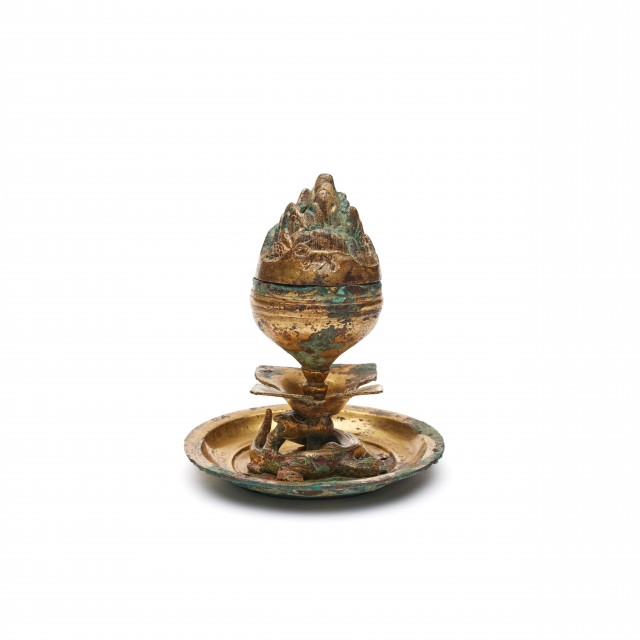
Censer in the Shape of Mount Bo (Boshanlu)

Photography by Synthescape, Digital image © Asia Society
Censer in the Shape of Mount Bo (Boshanlu)
1st-2nd century
North China
Gilt bronze
H. 5 1/2 x Diam. 4 5/8 saucer in. (14 x 11.7 cm)
Asia Society, New York: Mr. and Mrs. John D. Rockefeller 3rd Collection, 1979.109a,b
Licensing inquiries
Censers became popular during the 4th century B.C.E. in the southern state of Chu, where interest in incense and exotic fragrances was widespread. During the Western Han dynasty (206 B.C.E. - C.E. 9), they began to be cast in the form of mountain peaks identified with magical worlds such as Penglai, an imaginary mountain paradise believed to lie either in the far west or in the eastern seas. The mountainous landscape that forms the top of the censer is populated with small figures of dogs, tortoises, and monkeys and is perforated with small holes to allow the smoke of the incense to escape. This smoke was believed to represent cloud-breath or yunqi, an auspicious omen. The sight of smoke rising from a censer such as this one would have been interpreted as a tangible manifestation of cloud-breath, making such censers valuable tools for adepts in the various cults of immortality. On this censer, the mountainscape is supported on a four-petal tray standing on a coiled dragon cast in high relief.

